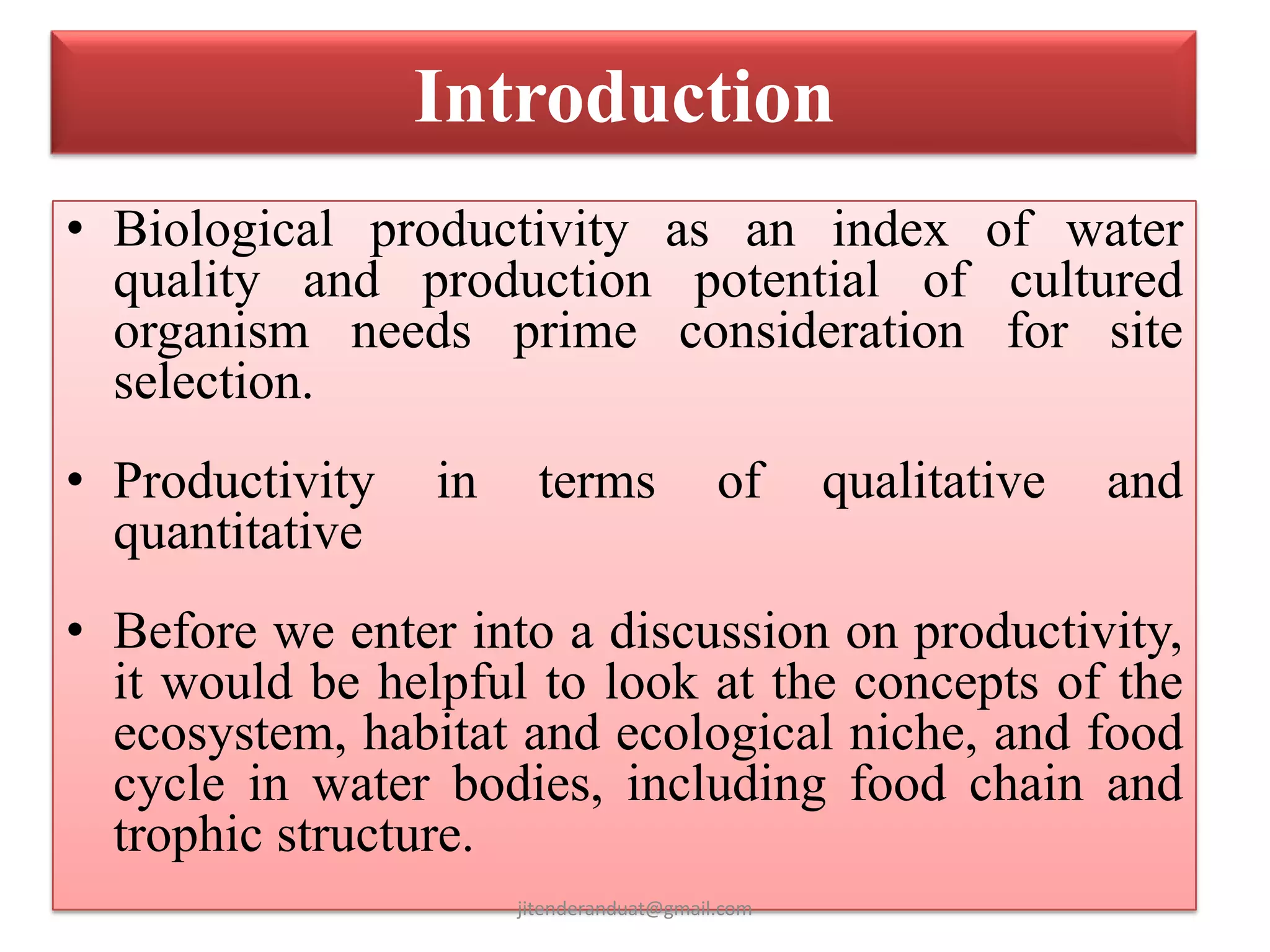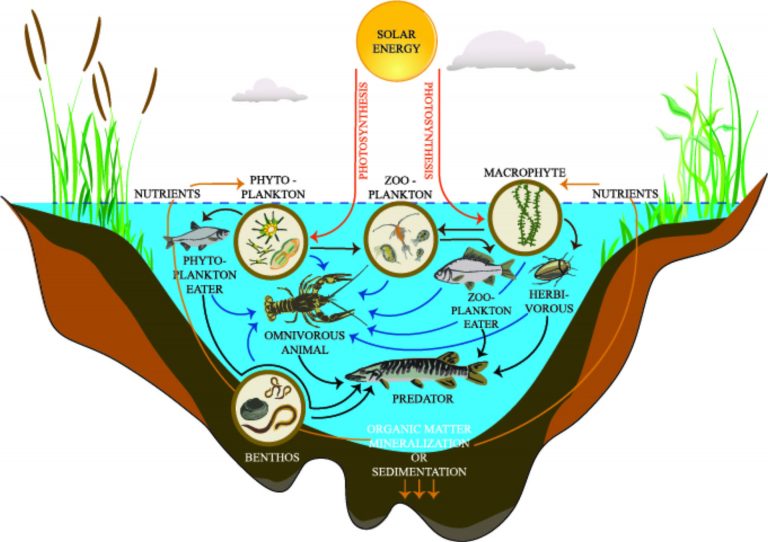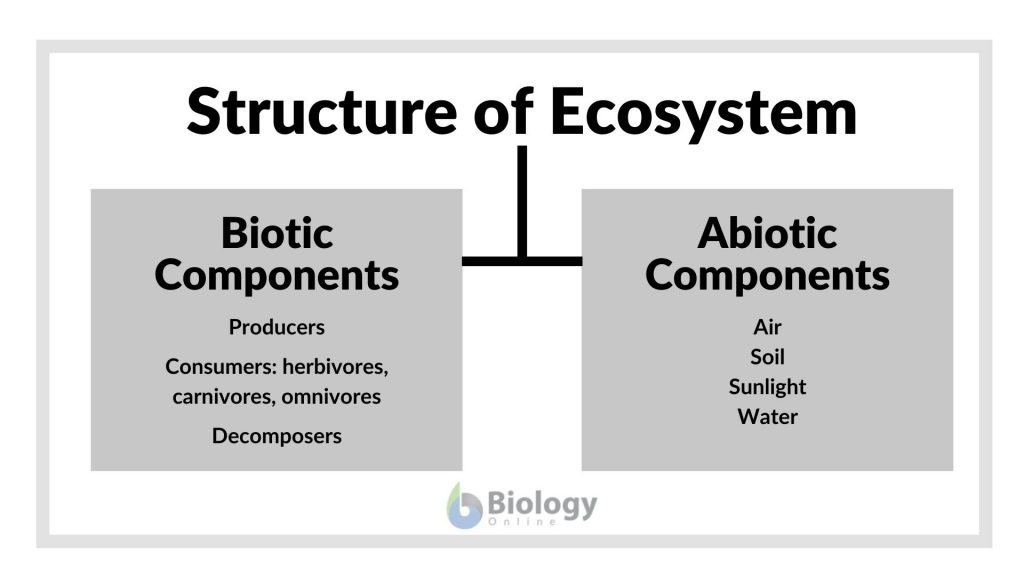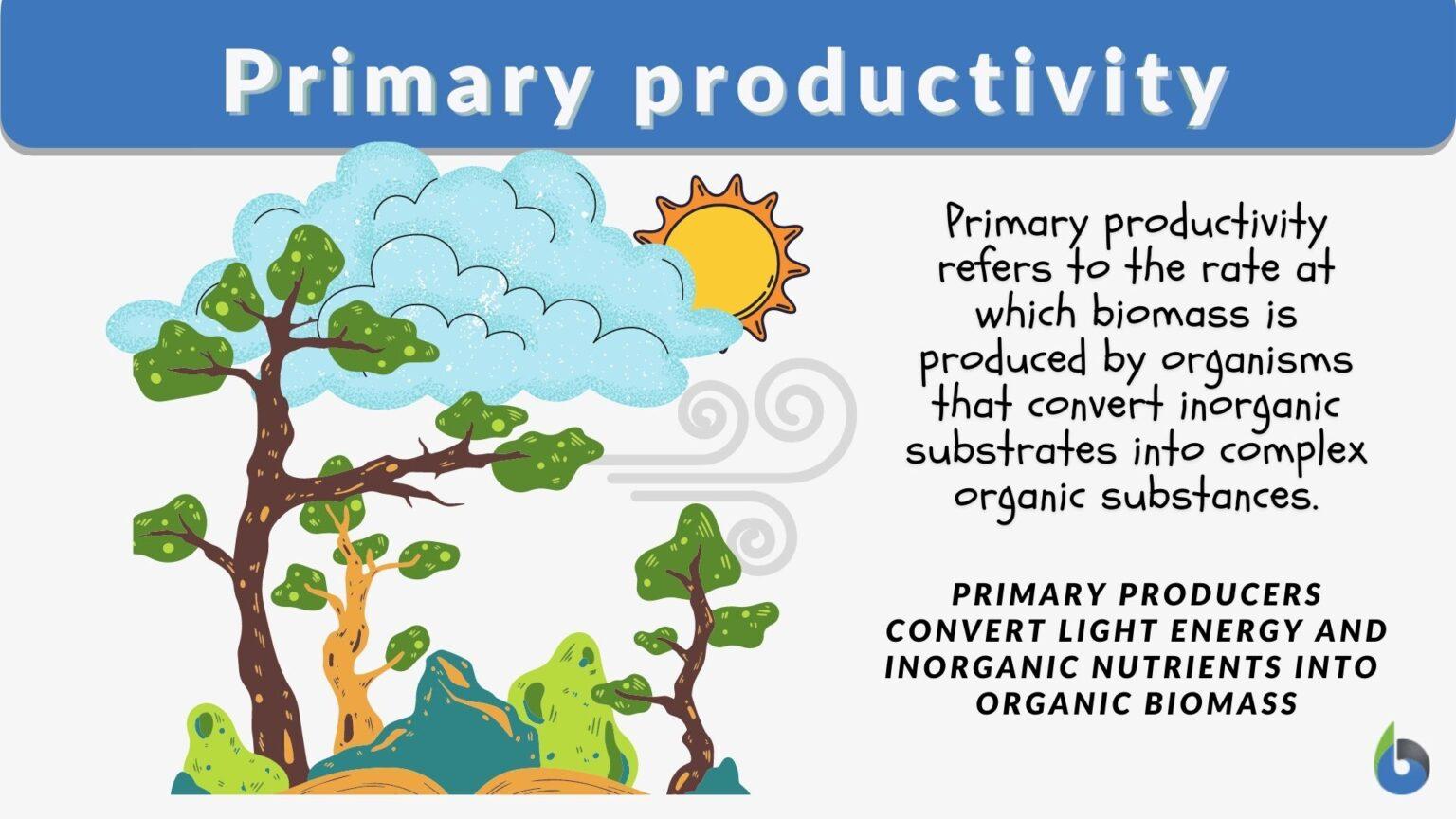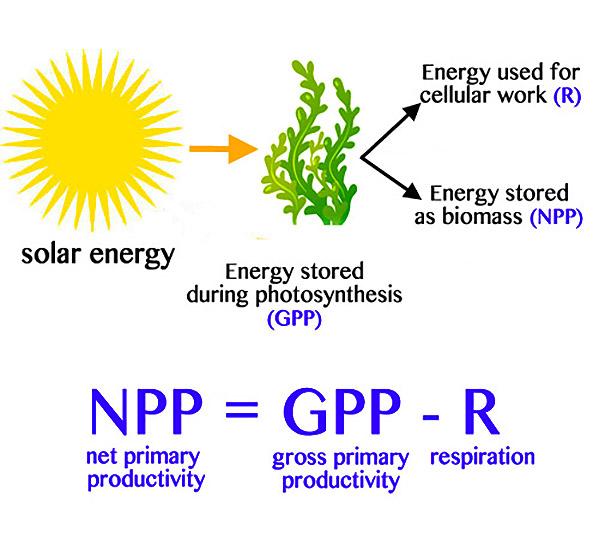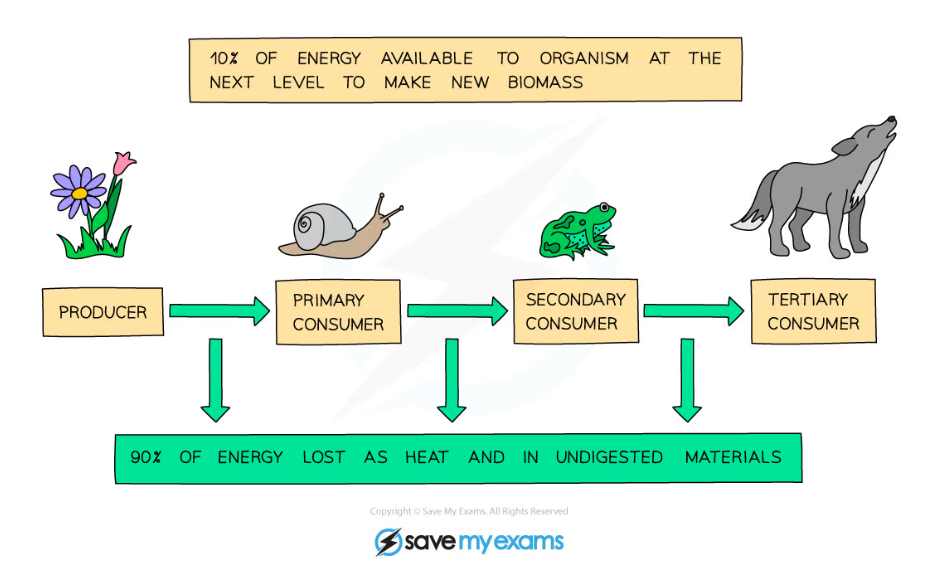Biological Productivity Includes Which Of The Following
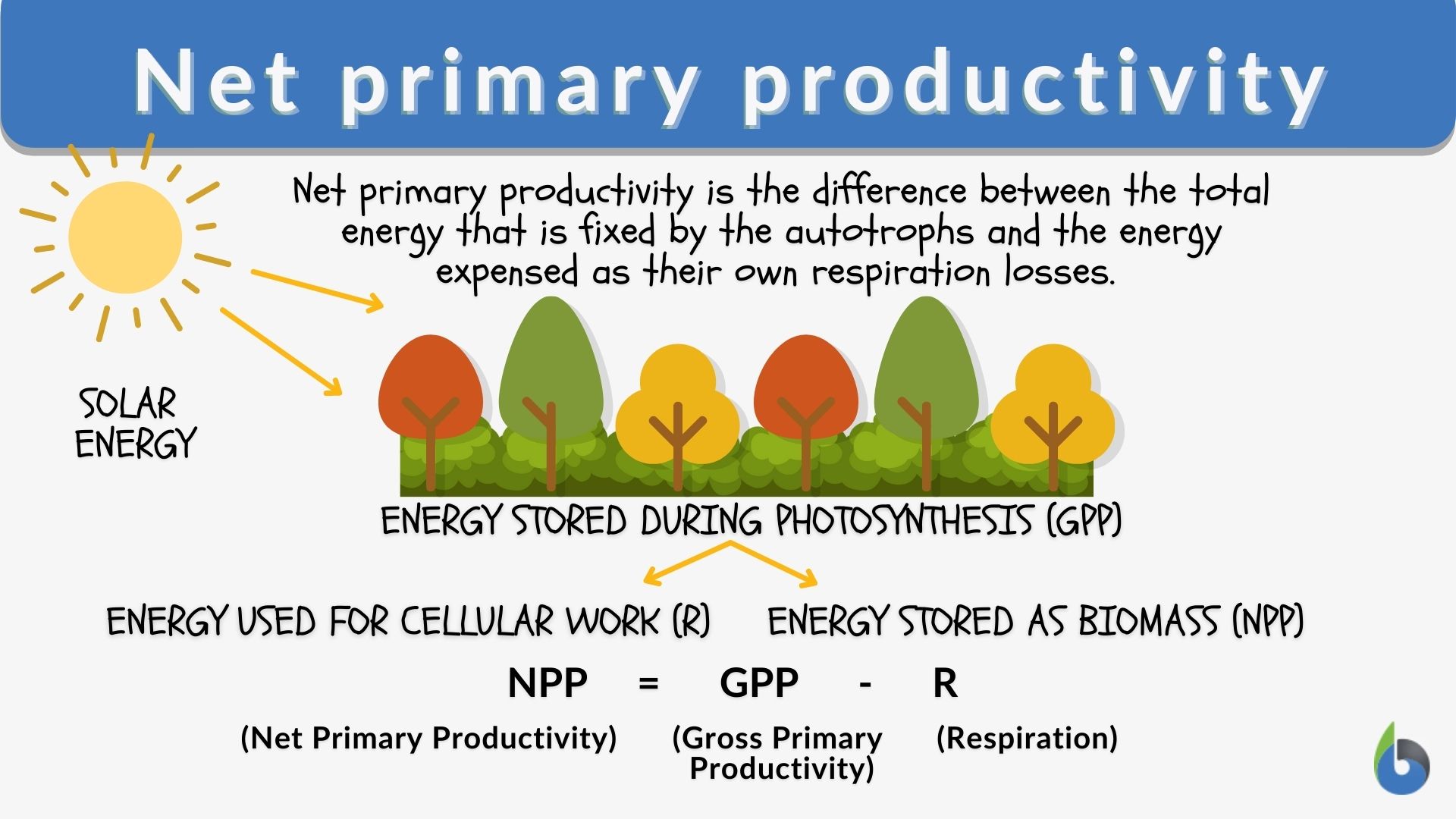
The health of our planet hinges on a complex interplay of factors, but few are as fundamental as biological productivity. From the microscopic phytoplankton in our oceans to the vast forests covering our continents, the rate at which organic matter is created dictates the flow of energy through ecosystems and ultimately sustains all life.
Understanding what comprises biological productivity is crucial for addressing pressing environmental challenges, from climate change to biodiversity loss. But what exactly falls under the umbrella of this vital concept? This article delves into the multifaceted nature of biological productivity, exploring its key components and highlighting its significance for the future of our planet.
Defining Biological Productivity
Biological productivity, at its core, refers to the rate at which biomass is generated within an ecosystem. It encompasses both the production of organic matter by autotrophs, organisms that create their own food through processes like photosynthesis, and the subsequent consumption and transformation of that matter by heterotrophs.
The key elements included in biological productivity are primary productivity, which focuses on the energy captured by producers, and secondary productivity, representing the growth and reproduction of consumers.
Primary Productivity: The Foundation of Life
Primary productivity is the cornerstone of all ecosystems. It's the rate at which autotrophs, primarily plants and algae, convert inorganic carbon into organic compounds using energy from sunlight (photosynthesis) or chemical reactions (chemosynthesis).
The main components of primary productivity include: gross primary productivity (GPP), the total rate of photosynthesis, and net primary productivity (NPP), the rate of organic matter accumulation after accounting for the autotrophs' own respiration. NPP is the crucial factor dictating how much energy is available to the rest of the food web.
Factors affecting primary productivity vary depending on the ecosystem. In terrestrial environments, sunlight, water availability, temperature, and nutrient levels are key. In aquatic environments, light penetration, nutrient concentration (especially nitrogen and phosphorus), and water temperature are often limiting factors.
Secondary Productivity: Energy Transfer Through the Food Web
Secondary productivity refers to the rate at which heterotrophs – consumers like animals, fungi, and bacteria – convert the organic matter they consume into their own biomass.
It represents the growth and reproduction of these organisms, reflecting the efficiency with which energy is transferred from one trophic level to the next. Understanding secondary productivity is vital for comprehending the dynamics of food webs and the flow of energy through ecosystems.
Several elements influence secondary productivity. Consumption rate, assimilation efficiency (how well an organism absorbs nutrients), and respiratory losses (energy used for metabolism) all play a role in determining how much biomass is produced.
The Interconnectedness of Productivity Components
It's essential to recognize that primary and secondary productivity are intrinsically linked. Primary productivity provides the foundation upon which secondary productivity is built.
Changes in primary productivity, whether due to climate change, pollution, or habitat destruction, can have cascading effects throughout the entire food web. This interconnectedness underscores the importance of managing ecosystems in a holistic manner.
For example, a decline in phytoplankton productivity in the ocean due to ocean acidification can lead to reduced populations of zooplankton, which in turn affects the populations of fish and other marine organisms that rely on them for food.
Measuring Biological Productivity: A Multifaceted Approach
Assessing biological productivity requires a range of methods, depending on the ecosystem and the specific component being measured. For primary productivity, techniques include measuring chlorophyll levels in plants, monitoring carbon dioxide uptake in forests, and using satellite imagery to estimate vegetation cover.
Measuring secondary productivity is more challenging, often involving tracking the growth rates of individual organisms or populations. Stable isotope analysis can also be used to trace the flow of energy through food webs and estimate secondary productivity rates.
Sophisticated modeling techniques are also being developed to simulate ecosystem dynamics and predict the impacts of environmental changes on biological productivity. These models incorporate data on climate, nutrient availability, and species interactions to provide a comprehensive understanding of ecosystem function.
The Role of Biological Productivity in Climate Change
Biological productivity plays a critical role in regulating the Earth's climate. Through photosynthesis, plants and algae absorb carbon dioxide from the atmosphere, helping to mitigate the effects of climate change.
Oceans play a very important role. Marine phytoplankton are responsible for absorbing a significant proportion of the carbon dioxide that is released into the atmosphere, and they therefore play a pivotal role in climate regulation.
However, changes in climate, such as rising temperatures and altered precipitation patterns, can also negatively impact biological productivity, leading to reduced carbon sequestration and potentially accelerating climate change. The interactions between biological productivity and climate change are complex and require careful monitoring and management.
Looking Ahead: Protecting and Enhancing Biological Productivity
Maintaining and enhancing biological productivity is crucial for ensuring the long-term health and resilience of our planet. This requires a multifaceted approach that includes protecting existing ecosystems, restoring degraded habitats, and promoting sustainable resource management practices.
Reducing pollution, mitigating climate change, and conserving biodiversity are all essential steps for safeguarding biological productivity and the vital ecosystem services it provides. Further research is needed to better understand the complex interactions between biological productivity and environmental change.
Ultimately, a healthy and productive biosphere is essential for supporting human well-being and ensuring a sustainable future. Recognizing the vital role of biological productivity and taking action to protect it are crucial investments in the future of our planet.

